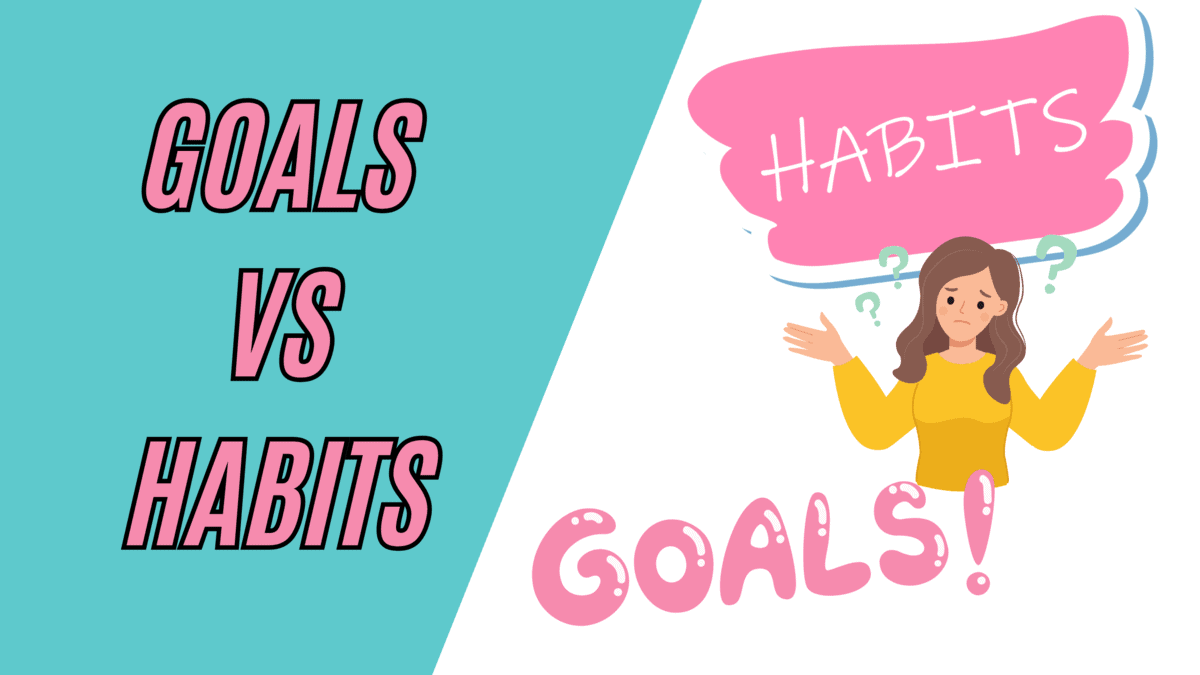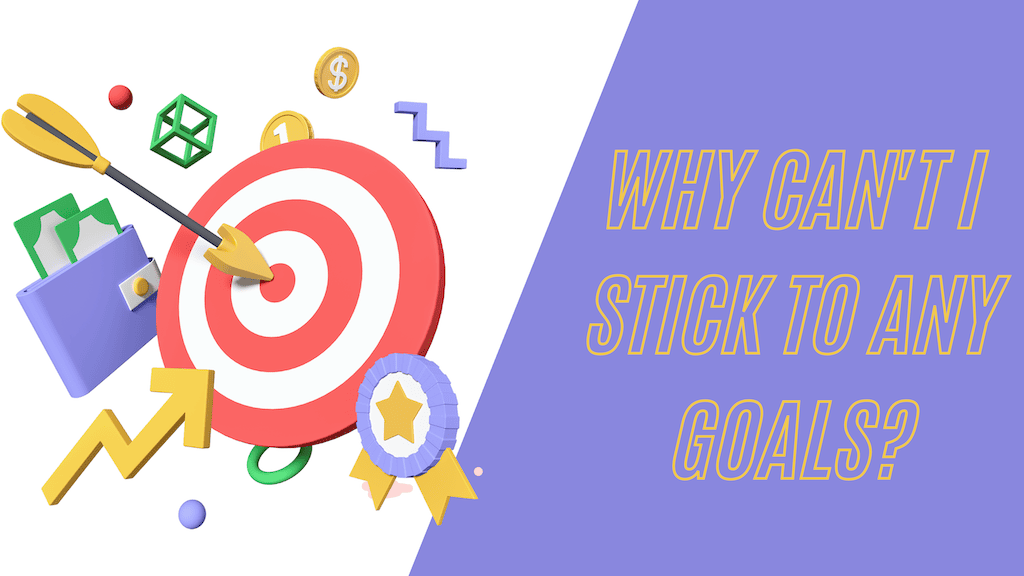There’s no questioning that setting goals is a fundamental part of personal growth and achievement. Without them, we’re like a ship drifting at sea with no destination.
Goals guide us – they provide direction and purpose in our lives.
But, how many goals are enough? What is the answer to the age-old question “how many goals should you have at once“
Should we be setting as many goals as possible, or just focusing on one?
Stick around and we’ll discuss it in detail what some personal development experts have to say so you can decide how many goals to set yourself.
How Many Goals Should I Set?
Unfortunately, like many things in personal development, there’s no cut-and-dry answer to this question.
It all boils down to you as an individual.
Experts also have different perspectives on the optimal number of goals to set at a time, which doesn’t help! Let’s break it down.
Setting one goal at a time
Some experts argue for the “one goal” approach, focusing all your energy on a single task before moving on to the next. Gary Keller and Jay Papasan, in their book The ONE Thing, preach the power of setting only one goal.
By starting small and focusing on one thing that matters most, you’ll achieve what’s called the domino effect.
Each successive domino has the power to topple over the next one, which is 50% larger in size. To put it into perspective:
- Domino 1 = A run-of-the-mill 2-inch domino
- Domino 18 = The size of the Tower of Pisa
- Domino 23 = The size of the Eiffel Tower
- Domino 31 = Would surpass the height of Mount Everest
- Domino 57 = Would carry you impressively close to the moon

The point here is that success is built sequentially, not simultaneously.
Using the same energy to knock over 57 dominoes of the same size is nowhere near as effective as knocking over 57 dominoes in the same chain that increases in size.
Keller and Papasan are also big fans of the 80/20 Rule (Pareto Principle) which we have a full article on and regularly put into practice ourselves.
Setting multiple goals at a time
The counter-argument to only setting one goal at a time – setting multiple goals at a time.
Caroline Adams Miller, goal-setting specialist and author of Creating Your Best Life: The Ultimate Life List Guide, claims that instead of focusing on a specific number, consider the type of goals you are setting and aim for a mix of personal, career, and long-term goals.
Which makes sense – right?
But one thing most personal development experts agree on is the importance of focusing on fewer, high-quality goals.
Quality > quantity. It’s not about setting a huge number of goals, but rather setting goals that actually align with your personal and career objectives.
They should be meaningful to you, inspire you, and have a significant impact on your life.
That’s all well and good but still doesn’t give us the optimal number of goals to set. There’s more to it than that.
Factors to consider range from your personal circumstances and capabilities to the nature of the goals themselves. The trick is to find a balance between being ambitious and realistic, between pushing your boundaries and recognizing your limits.

It’s not just about setting goals. It’s about setting the right goals for you.
One crucial aspect is your capacity to actually manage them. The last thing you want to do is spread yourself too thin by setting a million different goals and end up burning out – which we talk more about in our article on time management for freelancers.
It’s important to remember that our time, energy, and resources are finite. We need to be strategic in allocating them to get the most out of them. That’s where prioritizing techniques come in handy.
Now you might be thinking…
“So, how do I figure out how many goals are right for me?”
“What if I have conflicting priorities?”
Bear with me. By the end of this article, you’ll have a clearer understanding of how many goals to set at a time, how to avoid common goal-setting mistakes, and how to set yourself up for optimal achievement.
The Challenge of Setting the Right Number of Goals
If you’ve ever found yourself overwhelmed, staring at the huge list of goals you just wrote down because you want to achieve 100 different things – you’re not alone.
You’re in goal overload.
It’s a tricky balance to strike. And unfortunately for us, current science offers no definitive answer to the question of how many is the right number.
That’s why, rather than searching for a magic number, we should focus on understanding our capabilities and aligning our goals accordingly.
Ok, so if your list of 100 goals is excessive, what about setting 5 to 10 goals? While it might seem reasonable at first glance, even this number might divide your attention and focus too much to really make them meaningful.
Remember, achieving goals isn’t just about setting them, it’s about the follow-through. Every one of your goals requires time, energy, and resources. The more goals you have, the thinner you spread yourself and the lower the quality of your efforts to achieve each one gets.
Some experts suggest focusing on three goals at once.

On a micro level, I plan my days with this in mind. Every morning I get up and write down three non-negotiables for the day. Three goals that absolutely have to get done before I go to sleep – then once they’re done, if I want to spend the afternoon on the sofa watching Gilmore Girls then that’s cool.
Three goals might seem small, especially if you’re used to dreaming big with a long list of goals. But, focusing on fewer goals allows you to dedicate more resources to each one, increasing the likelihood of success. And when you choose goals that are meaningful to you and complement each other, the process becomes more manageable and less like a chore – whether that’s a goal for the day or a goal for the year.
Remember, it’s about quality, not quantity.
Setting fewer, higher-quality, well-thought-out goals could be the difference between feeling overwhelmed and actually making progress.
So, when in doubt, stick to the rule of three.
Now let’s talk about deciding what those three goals will be., starting with setting quality goals.
The Quality of Goals and Their Impact
James Clear, author of Atomic Habits (probably my #1 recommended book if you want to make any kind of change to your productivity, habits, and progress toward your goals) states that the art of goal setting is more about goal selection. And to do it effectively, you need to ruthlessly eliminate less important goals.
The Focus on Quality Over Quantity
When we talk about ‘quality’ in the context of goals, we’re referring to goals that are well-defined, actionable, and align with our desires and passions. We’re talking about strategic goals that drive us towards not just short-term achievement but also long-term success.
Whether you’re setting your goals for the week or the year, the same principles apply – but we won’t get into that here. We have a whole series on how to set your yearly, monthly, and weekly goals, so go check that out.
Why is this important? Because focusing on quality over quantity allows us to channel our energy and attention more effectively. It helps us avoid goal-setting mistakes like having excessive goals or overloading our goals. In essence, quality triumphs over quantity because it leads to more meaningful and productive outcomes.
The Role of Constraints
Time, energy, attention, and money – these are all constraints that we must consider in our goal-setting journey. They’re finite resources, and we need to allocate them wisely.
Attempting to pursue too many ill-fitting goals without paying any attention to the very real constraints that’ll prevent us from reaching them, just leads to an overwhelming sense of goal overload – which’ll get you nowhere.

If freelancing is your side hustle alongside a full-time job, your time and energy are huge constraints that someone running their business full time. You simply can’t set the same goals and expect the same outcome.
So remember, it’s a marathon, not a sprint. Overloading goals can quickly lead to burnout, as we discussed in our post about the toxic hustle culture. Hustle when you need to, but don’t constantly overload yourself.
Writing Down Goals and Action Plans
We’ve found that writing down our goals and creating detailed action plans is the #1 thing that puts us on the road to success. Some people feel restricted by setting a detailed action plan but for us, a clear vision with clear steps to get there is crucial – or we go nowhere.
Everyone has a different approach that works for them – and that’s okay. The key is finding a method that works for you, whether that’s a comprehensive action plan or a more flexible, intuitive approach.
At the end of the day, our goal-setting journey is a personal one.
How to Find and Prioritize Your Goals
Ok. So we know two things:
- We have to set a limited number of goals (let’s shoot for three)
- We have to set quality goals that are considerate to our circumstances and constraints
Now let’s find the goals that match that criteria, shall we?
To start, it’s time to transform your to-do list into a success list.
While a to-do list often overloads us with tasks, a success list narrows our focus to the most valuable tasks. Ones that push us toward success. Our post on setting annual goals provides in-depth advice and strategies on this.
Next, differentiate between “should do” and “could do”.
“Should do” goals align with your personal development and long-term vision. They contribute to your yearly goals and are often non-negotiable. On the other hand, “could do” goals are usually short-term tasks that, while nice to achieve, won’t significantly impact your progress if you decided to scrap them.
Now, let’s talk about trade-offs.
Being prepared to make sacrifices is just a part of life (don’t worry this isn’t about to get ocean deep). But, there will always be forks in the road where you have to give up on one goal to pursue another, or times when you just have to get comfortable with being uncomfortable as you face fears and push your limits.
Now that’s out of the way: we need to decide where we’ll make the biggest impact. Don’t put your eggs in the wrong basket by focusing on goals that don’t really have an impact.
Ask yourself the focus question.
“What is the one goal that, by achieving it, will make other goals easier or unnecessary?”
Trust me, this question helps create insane clarity about where you should focus.
Finally, evaluate your goals.
Are they specific? Are they excessively stressing you out or overwhelming you? If your goals seem too overwhelming or vague, it may be time to reassess. Learning from your experiences and adapting your goals for productivity can turn those overwhelming goals into achievable ones.

Our piece on how to manage freelance while working full-time shares more about balancing ambitions and responsibilities.
But that’s it. By this point you’ll have a list of specific, quality, not-too-far-fetched goals to hit the ground running with.
Now you just have to go do the work.
Next Steps in Goal Setting: Now What?
So, you’ve worked through the process of finding and prioritizing your goals. Excellent! But what’s next? Well, the journey of personal development is a continuous one. We always have to adapt, refine, and adjust to the rhythms of life. Let’s explore some considerations and steps you can take as you continue on your goal-setting journey.
Prioritizing Tasks so They Actually Fit Your Daily Schedule
Turn your list of goals into daily actions to get the work done.
We have a huge library of resources on all the time management techniques we’ve tried and tested that can help you organize your day more effectively and start smashing through that new goal list.
Techniques like Pomodoro, Timeboxing, and Eisenhower Matrix are a great place to start.
Investing in a Vision Board for Motivation and Accountability
Have you ever used a vision board? If you’re a visual person it’s an amazing way to keep your goals in sight (literally!), with a visual representation of them.
It’s like a tangible, daily reminder of your ‘why.’
Evaluating and Adjusting Goals for Long-Term Success
Finally, remember that your goals aren’t set in stone.
They’re meant to guide you, not confine you.
You grow and change constantly. So even though we preach that everyone should set annual goals or even longer-term goals, that doesn’t mean they shouldn’t grow and change with you.
If you find that a goal no longer serves you, don’t be afraid to let it go. It’s not a failure. It’s a recognition that you’ve changed. This approach to regular goal setting is something we’ve discussed extensively in our post on setting quarterly goals.
That’s it. We’ve come to the end of our guide on how many goals you should set at a time.
Focus on quality, not quantity. It’s about setting the right number of goals to suit your circumstances. And above all, it’s about enjoying the journey.
So, go forth and set goals – but not too many. Focus on around three like we talked about, ok?
Goal Setting FAQs
A: There’s no one-size-fits-all answer. The optimal number can vary, but it’s usually beneficial to focus on 1-3 complementary goals that align with your personal development.
A: Yes, setting too many goals can lead to overload and reduced focus. It’s often more effective to concentrate on a few high-quality, meaningful goals.
A: By employing prioritizing techniques, creating a success list, and using a habit tracker, you can manage multiple goals without feeling overwhelmed.
A: Your goals should be as specific as possible. Detailed goals with clear action plans can improve the chances of achieving them.
A: It’s essential to set both, but prioritize based on their importance and alignment with your long-term vision. A vision board can help keep this balance.
A: Setting multiple goals can lead to task switching and conflicting priorities, which can hinder progress and cause negative feelings.
A: Personal development is intertwined with goal setting. Setting and achieving goals allows you to realize your potential and advance your personal growth.
A: Focus on setting goals that reflect your desires and passions, align with your personal circumstances, and are accompanied by a clear action plan.
A: It’s key for long-term success in goal achievement. Regular evaluation allows you to adapt your goals based on your changing needs and circumstances.
A: Conflicting goals can create competing priorities, making it difficult to focus and progress effectively towards any single goal.




